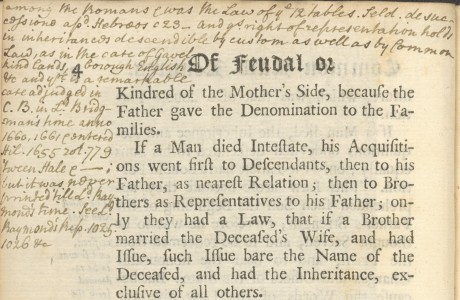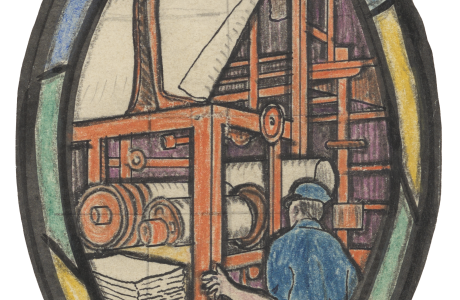Russian Imperial Provenance
The Lillian Goldman Law Library is one of the few U.S. libraries that owns a set of the Complete Collected Laws of the Russian Empire (Polnoe sobranie zakonov Rossiiskoi Imperii). We now know that our set is an Imperial set, one that came from a palace of the Tsars.
Tatjana Lorkovic, Curator of Slavic and East European Collections, Yale University Library, provides a detailed account of the set’s acquisition in her recent article, “The Past as Prologue: Building Yale University Library’s Slavic and East European Collection from the Beginning of the Twentieth Century until Today; Part One: 1896-1956,” SOLANUS: International Journal for the Study of the Printed and Written Word in Russia and East-Central Europe, New Series, vol. 22 (2011), pp. 43-62. In summary, it came about as follows.
In 1927 Professor George Vernadsky, a Russian emigre, was hired by Yale to teach Russian history, and also to help the library develop its Russian holdings. Vernadsky reported that the most significant gap in Yale’s collection was a set of the Complete Collected Laws of the Russian Empire (Polnoe sobranie zakonov Rossiiskoi Imperii), a 232-volume set. Vernadsky found a set for sale and warned that it could be Yale’s last chance to acquire a complete set. The hefty price tag was initially an obstacle, but Law Librarian Frederick C. Hicks (1875-1956) stepped forward and committed the Law Library to the purchase. The set was purchased from a New York dealer, Simeon J. Bolan, who specialized in Russian books.
The 1920s-30s were the Golden Age for accessioning choice items of Russian origin as the Soviet State sold off unwanted early books in order to earn desperately needed foreign currency and finance ambitious economic plans.
The set is bound in a stunning bright green morocco with the Imperial arms in gold stamped on the front cover as a super libros (see the image below). The Imperial arms are sufficient to indicate Imperial provenance, but precisely to whom did the set belong? The answer lies in at the base of the spine, where the Russian text identifies the origin of the set as the Elagin Palace (see the image at right).
The Elagin Palace, located on the Elagin Island in St. Petersburg, became the summer home of the Empress Maria Fedorovna (1759-1828), mother of Emperor Alexander I (1777-1825). The original building was commissioned by I. P. Elagin, a St. Petersburg merchant, who is believed to have retained Giacomo Quarenghi (1744-1817), the most noted architect of his day in Russia and a pre-eminent practitioner of the Palladian style, to design the edifice. Emperor Alexander purchased the Palace to ease the burdens of travel for his mother, who found the trip to the outlying palaces at Tsarskoe selo to be too strenuous. Carlo di Giovanni Rossi (1775-1849) was retained to redesign and enlarge the estate. After the death of Maria Fedorovna, Elagin Palace declined into a summer residence for the Imperial family and gradually a place of diversion for Russian prime ministers, among them S. Witte (1849-1915) and P. A. Stolypin (1862-1911). The buildings sustained heavy damage during the Second World War. After restoration the palace became and remains a museum devoted to porcelain, glass, and some folk arts. The island is a popular park these days and has been used in Soviet films as a backdrop.
Although Empress Maria Fedorovna had a bookplate (represented in the Yale bookplate collection), the Collected Laws of the Russian Empire was published shortly after her death and therefore represented a “Palace set” rather than a personal copy.
- W. E. Butler, Dickinson School of Law, Pennsylvania State University
Mike Widener, Lillian Goldman Law Library, Yale Law School




